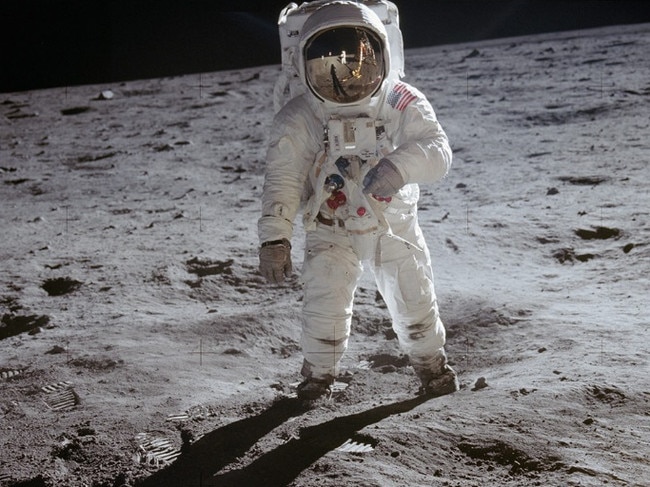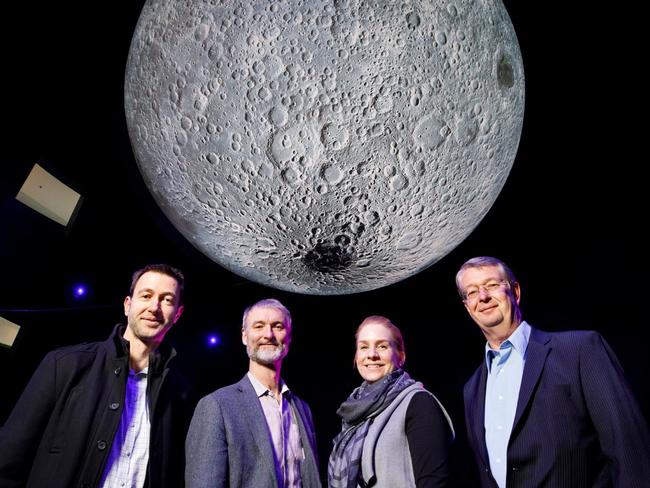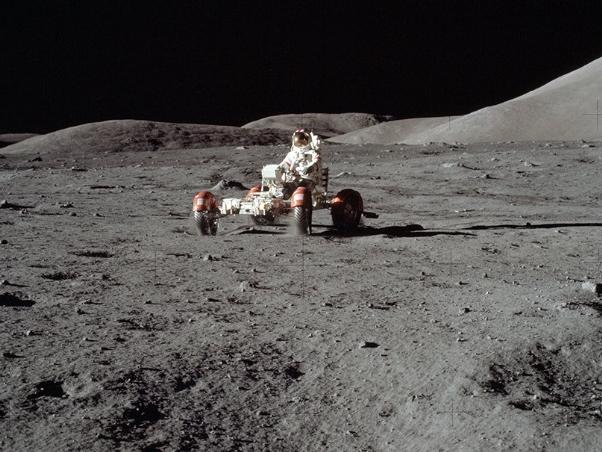Moon rock trail celebrates Australia’s pivotal role in the first landing
For the first time in the southern hemisphere, people will be able to touch a piece of the moon as five locations around the ACT celebrate the 50th anniversary of the moon landing
- Comanchero ‘road captain’ charged with money laundering
- Construction to start on Geocon city development
- Husband calls for rethink on assisted dying laws
- New plans for WIN News site
Most credit the United States with the moon landing but it was actually a tracking station just outside of Canberra which beamed the first footage of Neil Armstrong’s giant first step for mankind.
Robert Bunzli from the National Museum of Australia said the first eight minutes of the live television coverage — broadcast to a record global audience of 600 million people — was transmitted by the Honeysuckle Creek Tracking Station just south of the capital.
“There was a signal coming down from the Goldstone tracking station in America but the technicians had mucked it up and the image was initially upside down,” Mr Bunzli said.
“Right as Armstrong was standing on the lower rung of the ladder ready to step on the moon, the Americans in Houston decided to flick the switch to Honeysuckle.

“The movie The Dish highlighted Australia’s role but sort of showed Australian scientists as being somewhat bumbling and a little bit amateurish but in fact NASA regarded Honeysuckle as the most professional of their tracking stations and it was entirely staffed by Australians.”
Locals and visitors to Canberra can learn more about Australia’s crucial role in that historical moment as part of a Moon Rock Trail, starting July 5, which celebrates the 50th anniversary of the Apollo 11 mission.
For the first time in the southern hemisphere, people will be able to get their hands on a piece of the moon, the lunar touchstone, which is on display at Geoscience Australia on long-term loan from NASA.

The trail also includes Australian flags flown to the surface of the Moon, fragments of lunar rock gifted to Australia for our important role in the Apollo missions, and the chance to walk across the face of the Moon on one of Canberra’s highest peaks.
The trail will link five locations in the ACT where visitors will be able to see, touch and walk on the moon; Geoscience Australia, the National Museum of Australia, Questacon — The National Science and Technology Centre, CSIRO-managed Canberra Deep Space Communication Complex at Tidbinbilla, and the Mount Stromlo Observatory.
Geoscience Australia’s curator Steve Petkovski said we were privileged to be the only place in the Southern Hemisphere where visitors can now touch a moon rock that was specially brought back from an Apollo mission, rather than a piece that fell to earth as a meteorite.

“The touchstone is a sample of a mare basalt moon rock collected from the last Apollo 17 mission in 1972 and is now available for the public to touch at our new display,” Mr Petkovski said.
The National Museum of Australia will have a fragment of a rock also brought back from the Apollo 17 Moon mission on display as part of its Tracking Apollo: 50 years since the Moon landing exhibit.
The Apollo 17 mission was the final trip of the American Apollo space program during which ‘sample 70017’, a composite rock considered to be billions of years old, was collected.
The sample, which weighed around 3kg, became known as the ‘goodwill rock’ after American President Richard Nixon ordered the distribution of its fragments to 135 foreign heads of state, with a message of world peace in 1973.

Questacon Exhibition Content Manager Anita Beck said the display in Questacon’s foyer has some special elements thanks to a loan from the National Archives of Australia.
“In addition to fragments of Moon rock brought back from the Apollo 11 mission, Questacon is thrilled to be displaying an Australian flag that the NASA crew took with them on their historic 1.5 million kilometre journey,” Ms Beck said.
The Canberra Deep Space Communication Complex’s Director Ed Kruzins said the complex, which is managed by CSIRO on NASA’s behalf, will be featuring their lunar sample (10072,80), which at 147.25 grams is the largest Moon rock on public display in Australia.
“At 3.8 billion years old, this rock has been on a long journey from the Moon to the Earth. It was gifted to Australia to symbolise the close links that we have in space exploration with the United States and between CSIRO and NASA,” Dr Ed Kruzins said.

Brad Tucker from the Australian National University’s Research School of Astronomy and Astrophysics said people could follow in the footsteps of other astronauts at the Mt Stromlo Observatory with the ANU Moon sculpture.
“One of the hidden gems of the ANU Mt Stromlo Observatory is our Moon sculpture, which recreates the side of our nearest neighbour in the solar system,” Dr Brad Tucker said.
“Our Moon sculpture allows you to not only touch a piece of the Moon but to walk on it — experiencing first-hand the wonders of space and what it is like to take one small step, and one giant leap.”
The Moon Rock Trail locations are available here: bit.ly/MoonTrail
The Australian National University is also organising a bus on Thursday, July 18, to tour around these Moon Rock Trail destinations. Register your interest and pay here.
IN OTHER NEWS


